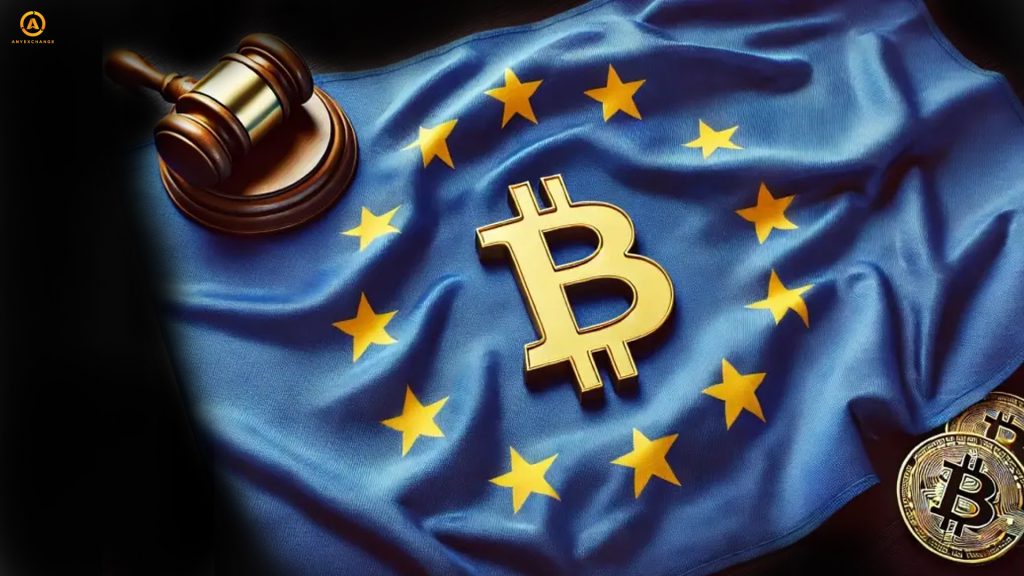
This year saw a very important event for the crypto sector in the European uniоn — the implementation of the Markets in Crypto-Assets regulation (MiCA) began.
Years passed while the new rules for cryptocurrencies in Europe from 2019 were being developed: committees were created, financiers were involved, professional participants of the cryptocurrency market were involved, discussions and surveys were held. In short, it was a large and meticulous work involving a large number of high-level experts, officials, politicians and crypto enthusiasts.
And now it has happened. The long-awaited new rules have been adopted and will come into force this year. Let’s take a closer look at what this set of rules is all about, how MiCA will change the crypto industry in Europe, and how the digital asset segment is reacting to the changes.
Background on MiCA
Since 2009, since the creation of the first cryptocurrency, in the process of its development and the emergence of new crypto assets, the question of their attitude to the rapidly developing sector has been acute for regulators in the EU and around the world. Ignoring it was not an option, so they had to decide how to respond. Isolate it? Regulate it? Integrate?
The answer to these questions was MiCA, an unprecedented set of documents that will partially enter into force in the European uniоn on June 29, 2023, marking a new milestone for digital finance and the global economy as a whole.
What is MiCA?

MiCA (Markets in Crypto-Assets) is a piece of legislation designed to regulate the market for cryptocurrency assets in the European uniоn.
The MiCA regulatory framework aims to create a single set of rules for the issuance and circulation of digital assets in the European uniоn. The main idea of the document is to create a holistic, safe and efficient cryptocurrency market. MiCA is a comprehensive initiative that seeks to balance market integrity, consumer protection and innovation.
By the end of 2024, all 27 EU member states will have to adapt their legal systems to meet the requirements set out in MiCA. MiCA eliminates the problem of “patchwork policies” by providing all states with a consistent approach to regulating the digital asset sector, in order to optimize the interaction of professional cryptocurrency market participants with regulators and investors.
The basic objectives of the MiCA rulebook are to:
- Strictly regulate customer identification rules to protect privacy and confidentiality on the one hand, and to prevent systemic risks such as money laundering on the other. In particular, MiCA’s impact on cryptocurrency exchanges is reflected in the requirement to disclose to law enforcement information on transfers to private wallets above certain limits.
- Provide legal clarity on the status and requirements for cryptocurrency companies and issuers of digital assets. For example, MiCA’s mandatory requirements for cryptocurrency companies inсlude the requirement to register a legal entity in one of the EU countries.
- Increased investment attractiveness. MiCA and legislative changes in the EU will create a safe, transparent and regulated environment that will encourage investment inflows.
What MiCA does and does not apply to

We assume that the new legislation is comprehensive and regulates all areas of activity in the EU cryptocurrency market, but there are still some exceptions.
MiCA applies comprehensively to crypto assets. However, these rules do not apply to traditional assets with a cryptocurrency as an underlying asset. In other words, the new rules do not apply to tokenized exchange-traded funds (spot ETPs that track cryptocurrency prices, analogous to ETFs in the U.S.) or to stocks and bonds issued by a cryptocurrency service provider (CASP, Crypto-Asset Service Provider). In other words, MiCA does not regulate traditional financial instruments that are in any way related to cryptocurrencies.
When it comes to MiCA and decentralized finance, the picture is more complicated for regulators. If a digital asset has no identifiable issuer, to whom should the legislation be applied? This is particularly the case for the largest cryptocurrency, bitcoin, on whose movements the entire global crypto market depends. Thus, the first cryptocurrency does not fall within the scope of MiCA provisions that regulate the issuance, circulation and admission to trading of issuing companies. At the same time, intermediaries, CASPs working with similar 100% decentralized digital assets, are subject to MiCA regulations. This applies both to service providers with crypto-assets registered in the territory of the European Economic Area states and to crypto-companies from other countries providing services to European citizens. In the latter case, MiCA regulates cross-border cryptocurrency transactions.
Service providers (CASPs)
Under MiCA, a cryptocurrency service provider (CASP) is a person who professionally provides the following services:
- The custody and administration of digital assets owned by third parties. This refers to the new crypto wallet rules under MiCA that services and platforms specializing in the storage of cryptocurrencies must comply with.
- Providing opportunities to trade or exchange cryptocurrencies (cryptocurrency exchanges, marketplaces, exchangers).
- Receiving, transmitting and executing orders relating to crypto assets on behalf of third parties (cryptocurrency brokers).
- Providing advice on digital assets.
The MiCA rules impose the following basic technical requirements on CASP:
- Registration of a legal entity and presence of an office in one of the countries of the European uniоn, formation of authorized capital (from €50,000 to €150,000 depending on the services provided);
- Obtaining a license from the competent authority in the place of registration.
The new regulations also detail basic requirements, such as obligations to combat terrorism, money laundering and environmental pollution, to deal fairly with customers and ensure the protection of their personal information and assets, reputation and minimize all types of risks.
Classification of cryptocurrencies
The MiCA regulation includes the classification of cryptocurrencies into the following types
- Tokens backed by an asset (fiat, commodity, cryptocurrency, or a combination).
- Tokens backed by a single fiat currency as legal tender. This category is as close as possible to the essence of electronic money.
- Other tokens. This includes service tokens that enable payment for goods or services.
Requirements for Issuing Entities
A cryptocurrency issuer under MiCA is a legal entity registered in the EU zone that offers crypto assets of any kind to the public directly or with admission to trading platforms. This means that anonymous new issuers can no longer be anonymous.
The issuer is also required to publish a white paper and have it approved by the competent authority. The new rules introduce significant changes/restrictions/prohibitions for algorithmic stackable coins and significantly tighten the requirements for stackable coins in general. The impact of MiCA on stablecoins can be characterized as the most serious compared to other altcoins. This primarily concerns the issue of providing stablecoins with verified reserves.
Benefits of regulating crypto assets under MiCA
- Increased confidence among large and retail investors. The impact of MiCA on cryptocurrency investors is primarily to increase access to a legitimate market for virtual assets for institutional and venture capital investors. For retail investors, the MiCA regulations provide a comprehensive set of consumer protection measures.
- Unify the fragmented regulatory framework of the European uniоn. This will create a more predictable and stable business environment.
- Improved interaction with traditional financial institutions. With clearer rules, the new directive simplifies financial relationships and makes banks more willing to work with high-risk cryptocurrency companies.
- Simplify cross-border payments for CASPs. It is enough to obtain a license in one European country and operate throughout the EU.
Negative aspects of MiCA

- Risk of slowing down innovation. Regulatory changes make it difficult for young companies to get started. Both government officials and entrepreneurs are still working out the updated mechanisms, and it should take some time for MiCA and cryptocurrency startups to enter into constructive interaction. In any case, there are fairly high barriers to entry for small businesses, which makes the policy more favorable for larger companies. So it’s still hard to say exactly how MiCA will affect innovation in the crypto industry.
- Difficulties in legalizing stablecoins. To operate legally in the EU, issuers must obtain an Electronic Money Institution (EMI) license. So far, only Circle, the USDC issuer, which has always relied on compliance with all legal norms, has received it. Tether, on the other hand, is definitely worse off. First of all, with full disclosure of information and confirmation of USDT backed by reserves. Major cryptocurrency exchanges are gradually restricting the access of EU users to illegalized stablecoins. So at the moment, the position of the first in capitalization steiblcoin on the European market is quite shaky.
MiCA’s impact on the global crypto industry
It is still difficult to say exactly what vector MiCA’s influence on the crypto market in Europe will take. Whether it will be stimulating or inhibiting, only time will tell. But the fact that regulators of other countries are looking at the new EU regulations and analysts, traders and investors are studying the predictions for the cryptocurrency market in the EU after MiCA is undeniable.
This issue is especially relevant for the United States, where the largest cryptocurrency companies and institutional investors are registered and where very strict, clumsy, bureaucratized and corrupt government regulation is in place. Many experts believe that big money and the cryptocurrency market cannot find each other due to the insufficient and harsh pressure of the US authorities.
So, with a certain degree of probability, the best practices of MiCA implementation in Europe will be transferred in one form or another to the regulatory frameworks of other countries.
Conclusion
As the regulatory changes in Europe are still in the implementation phase and there is no precise data on the extent of their impact, experts’ opinions on the prospects for the cryptocurrency market after MiCA vary.
Bruno Le Maire, French Minister of Economy and Finance, is optimistic: he believes that the implementation of MiCA will “put an end to the Wild West in the crypto industry”.
According to Martin Brunko, Vice President of Binance, the updated legislation will play into the hands of small companies that do not need to spend a lot of resources on legalization in different jurisdictions. Many experts believe that the legal changes put too much pressure on the stablecoin market.
Anyway, analysts are waiting for the outcome of the interaction between cryptocurrency assets and MiCA in 2024 to form a more or less objective opinion.
Thank you for your attention. Invest safely and profitably!
AnyExchange is a cryptocurrency exchanger through which you can safely convert digital assets at the most favorable rate. The platform also offers fast money transfers worldwide.





